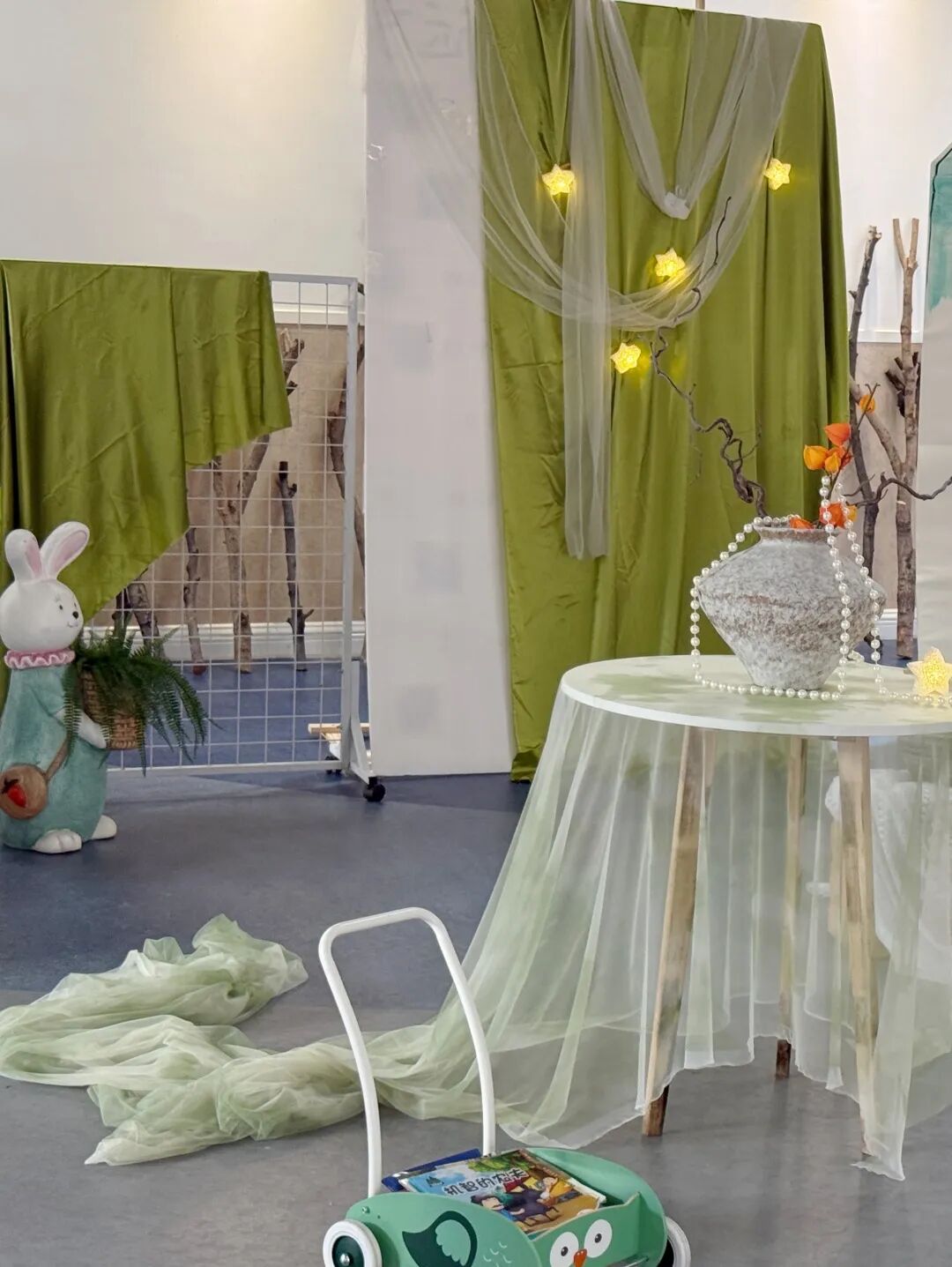王老师微信:18610206462
#音乐教案幼儿园PPT课件
活动目标:
1.感受并掌握音乐中的节奏,能够快乐的歌唱。
2.用肢体表现歌曲,激发幼儿的想象力。
3.在活动情境中体验音乐游戏的乐趣。
4.在学习歌表演的基础上,结合游戏情节,注意随着音乐的变化而变换动作。
5.通过整体欣赏音乐、图片和动作,帮助幼儿理解歌词内容。
活动准备:音乐、节奏图谱、毛毛虫、苹果图片
Stude
A
Properties: Recorder, Overhead Projector and a map of world.
Teaching Objectives:
1. Practise listening ability.
2. Revise the grammar: the Comparative Degrees of Adjective and Adverbs
The Past Perfect Tense
Language Focus: Checkpoint 18
Teaching Procedures:
I. Showing the teaching aims
II. Revision
Check homework, then ask the students to read the partners’ homework to share with each other.
Revise the use of the Infinitive
III. leading in
T: Today we’ll learn something about Coco. Do you know where she is from?
IV. Listening practice
Play the tape or for the students to listen and find the answer, then look at the workbook, Exercise 1, go through the questions with the students and make sure they can understand what they mean. Play the tape again, let the students discuss their answers in pains before the teacher checks the answers with the whole class.
V. Presentation
Show the students a map of the world, and ask: What map is it? Help the students find “China” and “India” on the map. Let the students discuss the two countries: They are developing countries. They have a large population in the world.
Ask: What’s the population of China and what’s the population of India? Let the students read Part 2 and answer the questions. (China’s population is 1 328 000 000 and India’s population is 1 000 000 000). That’s to say India’s population is smaller than China’s .Ask the students to use the words in the box to complete the passage, then read together, finally ask the students to retell the text.
VI. Practice
Revise the Grammar: The Past Perfect Tense, give some examples:
1. He had left before his wife came back.
2. I remembered that Peter had already got a bike.
3. By the end of last month, he had learned 2000 new words.
4. When I got to the cinema, the film had begun.
Then ask the students to do Exercise 3. The answers are: 1 C 2 E 3 A 4 B 5 D. Let the students read these sentences together.
VII. Practice
Ask the students to do Exercise 4 first, then check the answers. The answers are: had, in, is, more, the, had, to, in, had, that, to, us, and, to
VIII. Workbook
Give the students five minutes to finish workbook. Do Exercises 1, 3 and 4. Then check the answers.
The answers to Exercise 1 are: took, went, found, was, called, told, had happened, said, would go, came, was found, checked, founded, said, stole, went, enjoyed, came, found, had stolen, had
The answers to Exercise 3 are: I worn out 2 try on 3 slow down 4 made up my mind 5 am pleased with 6 were angry with, deserve to 7 at least 8 as if 9 carried on
IX. Summary
Exercises in class
Fill in the blanks according to the text in this unit.
Lucy and Lily are___1___. They are living together___2___. But sometimes they fight. It doesn’t last too___3___. They___4___very well with each other again.
They look___5__, so it’s hard for people to recognize them: Who is Lucy___6__Lily. We always___7___mistakes. They feel___8__. They like most of the same things, for example: music, food and___9__. But Lily likes to___10__, Lucy likes to___11__, they don’t like the same colour,____12___. So they have some___13____Sometimes they disagree, but they never___14__. They love each other and they are___15___happy that they are twins.
Answers: 1.twins 2.most of the time 3.long 4.get on 5.the same 6.or 7.make 8. the same 9. books 10 .dance 11. sing 12. either 13. differences 14. fight 15.both
X. Homework
Prepare for the final examination.
Lesson 70 教学设计方案
Properties: Computer, Projector, PPT document provided.
Teaching Objectives:
1. Let the students understand the dialogue and learn new words.
2. Go over the Past Perfect Tense.
Language Focus:
New words: British, fail, summit, misty, mist
Useful expressions: disappear into, the first men to do tins, try to reach the top of
Teaching Procedures:
I. Showing the teaching aims
II. Revision
Ask the students to act out the dialogue is provided in Lesson 69-1.asf
III. Lead in
Give the students some information and pictures about Mount Qomolangma, and check their homework. Let them speak something about the history of climbing the Mount Qomolangma.
For example:
It was formed 60million years ago and ascends to the height of 8850. Surveyor General Andrew Waugh proposed to name the mountain Everest after his predecessor, George Everest. This name prevailed until today, although the mountain has two local names – Qomolangma in Tibetan, Sagarmatha in Nepali.
IV. Watch and listen
Ask the students to watch the flash Because it is there.swf which is provided. Listen the text carefully, and finish the questions:
True or False
1. Mount Qomolangma is the tallest mountain in the world. ( )
2. George Mallory is a professional (职业的) mountain climber. ( )
3. Mallory had tried four times to reach the top of the mountain. ( )
4. In 1921 he tried to climb the mountain for the first time. ( )
5. Edmund Hillary and Tenzing Norgay were thought to be the first men to reach the top of the mountain. ( )
6. Edmund Hillary found Mallory’s body in 1999. ( )
Answers:
1. √ 2. × 3. × 4. √ 5. √ 6. ×
V. Read the text
Let the students read the text carefully and grasp the main idea of this article. And find out what happened in different years (1921, 1922, 1924, 1953, 1999).
nne’s Best Friend Do you want a friend whom you could tell everything to, like your deepest feelings and thoughts? Or are you afraid that your friend would laugh at you, or would not understand what you are going through? Anne Frank wanted the first kind, so she made her diary her best friend. Anne lived in Amsterdam in the Netherlands during World War Ⅱ. Her family was Jewish so nearly twenty-five months before they were discovered. During that time the only true friend was her diary.
She said, ”I don’t want to set down a series of facts in a diary as most people do, but I want this diary itself to be my friend, and I shall call my friend Kitty.” Now read how she felt after being in the hiding place since July 1942. Thursday 15th June, 1944 Dear Kitty, I wonder if it’s because I haven’t been able to be outdoors for so long that I’ve grown so crazy about everything to do with nature. I can well remember that there was a time when a deep blue sky, the song of the birds, moonlight and flowers could never have kept me spellbound. That’s changed since I was here. …For example, one evening when it was so warm, I stayed awake on purpose until half past eleven in order to have a good look at the moon by my self. But as the moon gave far too much light, I didn’t dare open a window. Another time five months ago, I happened to be upstairs at dusk when the window was open. I didn’t go downstairs until the window bad to be shut. The dark, rainy evening, the wind, the thundering clouds held me entirely in their power; it was the first time in a year an
ts exercise, fit, strong, pollutionshare… with…, notice, pay attention to, signals, safety rules, helmets, light-colored, reflectors, in case of, first aid, call 120Stage 4:Post-readingFinish Ex.2 and a translation task.Stage 5:ProjectHow can we be safe on the road? Write a passage according to the information in 3, add your own ideas. The following words may help you.should (not)/must (not)/had better (not)play on the road; listen to music;look left/right; pay attention to;obey traffic rules; first aid;Stage 5:Summary and homework1. Summary:New words and phrases:truck, notice, safety,in a word, look out, pay attention toUseful expressions:Bicycle riding is good exercise.In a word, the best way to be safe is to be careful.Safety rules for bike riders:They must wear helmets to protect their heads.…, bicycle riders should know how to give first aid.2. Homework:a) Review the key point in Section C.(2) Complete the passage of Project.(3) Preview Section D. Collect information about bicycle races.V. Blackboard designSection CWords and expressionssafety, truck, notice, injury, signal, pay attention to, in case ofcan master the rules of changing original verbs into past tense, for example, learn-learnt, study-studied and so on.
Ability aims:
Students’ ability of listening will be improved and they can make a new conversation by using simple past tense.
Emotional aims:
Students will be interested in learning English grammar and they will have the courage to challenge the new things.
Teaching key points and difficult points:
Key points:
Students can master the rules of changing original verbs into past tense, for example, learn-learnt, study-studied and so on.
Ability aims:
Students’ ability of listening will be improved and they can make a new conversation by using simple past tense.
Emotional aims:
Students will be interested in learning English grammar and they will have the courage to challenge the new things.
Teaching key points and difficult points:
Key points:
Students can master the rules of changing original verbs into past tense.
Difficult points:
Students will use simple past tense to describe an unforgettable experience that happened in the past.
Teaching procedures:
Students can master the rules of changing original verbs into past tense, for example, learn-learnt, study-studied and so on.
Ability aims:
Students’ ability of listening will be improved and they can make a new conversation by using simple past tense.
Emotional aims:
Students will be interested in learning English grammar and they will have the courage to challenge the new things.
Teaching key points and difficult points:
Key points:
Students can master the rules of changing original verbs into past tense.
Difficult points:
Students will use simple past tense to describe an unforgettable experience that happened in the past.
Teaching procedures:
Step 1 Lead-in
Greet students and sing a song Yesterday once more.
Ask students the topic of this song then lead in the new class naturally.
(Justification: the song’s topic relates to the past and it is a very classic English song, so students will be drowned in the music even try to study this song.)
Step 2 Pre-listening
Give some examples to introduce the rules of changing original verbs into past tense.
Let students make some sentences to describe an experience of their own.
(Justification: students will be familiar with the grammar point and they can have a basic awareness of the English grammar.)
Step 3 While-lisening
1. Extensive listening
Listen to the tape for the first time and answer the quest
Unit 1 How do you study for a test?
Teaching aims:
Knowledge aim:
Students can accumulate some useful words through reading, such as frustrating, conversation and so on.
Students will learn more ways to learn English better.
Ability aim:
Students can use some basic reading strategies including skimming, scanning and prediction to read efficiently.
Emotional aim:
Students will be interested in learning English and can find the best way to learn English well.
Key points and difficult points:
Key points: Students can master some useful expressions and comprehend the content of this passage.
Difficult points: Students can master some useful reading strategies and put them into practice.
Teaching Aids: PPT. pictures
Teaching Procedures:
Step 1 lead in
1. Greeting with my students
2. Free talk
Let students talk about why they learn English freely and invite some students to share their idea with us.
S1: because it is very useful for us to communicate with foreigners…
S2: because we should have a good score in English examination.
By this way, teacher will lead students to think another question as they believed that English is very important in our life. “How can we learn English well?” then teacherwill lead in today’s topic “how do you learn best?”
Step 2 Pre-reading
Discussion and prediction
Teacher will encourage students to discuss with their partners about the way they usually use to study English, at the same time, let them predict what the author will tell us in this passage.
Step 3 While- reading
1. Global reading
Ask students to skim the passage and try to summarize the general idea of it. Then let students scan the passage for some specific information and answer the following questions,
“How many persons are mentioned in this passage?”
“How many ways do the characters mention in this passage?”
2. Detailed reading
Students will be required to read the passage again to finish the chart below the passage.
Step 4 post-reading
1. Deal with the language points
After students have finished reading, Teacher will ask them try to find the new words and expressions in the passage. They should try to learn them by themselves. Then we will deal them together.
2. Pair work
Students will work in pairs to do a survey by using the expressions on the textbook. Then they should finish the chart below the passage.
Summary and homework
Ask students to do a survey on more students about their ways of learning English.
Blackboard design
ion:
What are they talking about?
(Justification: students’ ability of getting main idea through extensive listening will be improved.)
2. Intensive listening
Listen to the tape one more time and answer the questions:
1. What does Lingling’s grandma do?
2. What does Lingling’s grandpa do?
3. Is Lingling’s grandpa learning English now?
(Justification: these questions can help students grasp some detailed information of Lingling’s family, and also, their listening ability will be improved.)
Step 4 Post-listening
Four students in a group, share an unforgettable experience with their partners. PaWoman :Good morning,sir!Can I help you?Dad: Yes,please. What w 1 you like,Ann?Ann : A l 2 bowl of noodles w 3 carrot and beef. I’m hungry.Dad: Anything to d 4 ?Ann: Yes. A glass of orange j 5 .Dad: OK. What a 6 you,Tom?Tom: I’m not h 7 .Just a b 8 of water.Dad: All right. And I’d l 9 a cup of tea.Woman :H 10 you are.Dad: Thank you.y attention to use the simple past tense. After 5minutes, some students will be invited to share in front of the class.
(Justification: this activity can help students improve their speaking ability, and can provide them a chance to apply the knowledge into real situation.)
Step 5 Summary and homework
Summary: Invite one student to summarize what we have learned today, and the teacher will give some help to complete.
Homework: Ask students to share the experience with their parents in English after class.
Blackboard design:
Step 1 Lead-in
Greet students and sing a song Yesterday once more.
Ask students the topic of this song then lead in the new class naturally.
(Justification: the song’s topic relates to the past and it is a very classic English song, so students will be drowned in the music even try to study this song.)
Step 2 Pre-listening
Give some examples to introduce the rules of changing original verbs into past tense.
Let students make some sentences to describe an experience of their own.
(Justification: students will be familiar with the grammar point and they can have a basic awareness of the English grammar.)
Step 3 While-lisening
1. Extensive listening
Listen to the tape for the first time and answer the question:
What are they talking about?
(Justification: students’ ability of getting main idea through extensive listening will be improved.)
2. Intensive listening
Listen to the tape one more time and answer the questions:
1. What does Lingling’s grandma do?
2. What does Lingling’s grandpa do?
3. Is Lingling’s grandpa learning English now?
(Justification: these questions can help students grasp some detailed information of Lingling’s family, and also, their listening ability will be improved.)
Step 4 Post-listening
Four students in a group, share an unforgettable experience with their partners. Pay attention to use the simple past tense. After 5minutes, some students will be invited to share in front of the class.
(Justification: this activity can help students improve their speaking ability, and can provide them a chance to apply the knowledge into real situation.)
Step 5 Summary and homework
Summary: Invite one student to summarize what we have learned today, and the teacher will give some help to complete.
Homework: Ask students to share the experience with their parents in English after class.
Blackboard design:
Students can master the rules of changing original verbs into past tense.
DifficThe teacher asks the students to read 1a and match the topic sentence with each paragraph. Then write a title for the passage in the box above.2. Read and understand. The teacher plays a flash about the text. After watching it, the students should find the answers to the questions in 1c.(1)What do people use bicycles for?(2)Why is bicycle riding good exercise?(3)How do bicycle riders protect their heads?(4) What must bicycle riders do when riding at night?(5)If a bicycle rider is badly hurt in a traffic accident, what should he / she do?3.Do some listening. Listen to 1a and find out ult points:
Students will use simple past tense to describe an unforgettable experience that happened in the past.
Teaching procedures:
Step 1 Lead-in
Greet students and sing a song Yesterday once more.
Ask students the topic of this song then lead in the new class naturally.
(Justification: the song’s topic relates to the past and it is a very classic English song, so students will be drowned in the music even try to study this song.)
Step 2 Pre-listening
Give some examples to introduce the rules of changing original verbs into past tense.
Let students make some sentences to describe an experience of their own.
(Justification: students will be familiar with the grammar point and they can have a basic awareness of the English grammar.)
Step 3 While-lisening
1. Extensive listening
Listen to the tape for the first time and answer the question:
What are they talking about?
(Justification: students’ ability of getting main idea through extensive listening will be improved.)
2. Intensive listening
Listen to the tape one more time and answer the questions:
1. What does Lingling’s grandma do?
2. What does Lingling’s grandpa do?
3. Is Lingling’s grandpa learning English now?
(Justification: these questions can help students grasp some detailed information of Lingling’s family, and also, their listening ability will be improved.)
Step 4 Post-listening
Four students in a group, share an unforgettable experience with their partners. Pay attention to use the simple past tense. After 5minutes, some students will be invited to share in front of the class.
(Justification: this activity can help students improve their speaking ability, and can provide them a chance to apply the knowledge into real situation.)
Step 5 Summary and homework
Summary: Invite one student to summarize what we have learned today, and the teacher will give some help to complete.
Homework: Ask students to share the experience with their parents in English after class.
Blackboard design:
活动过程:
一、导入:毛毛虫来了
1.出示ppt1
今天来了位朋友和大家做游戏,是谁呢?(毛毛虫)
2.那我们来听一听它在做什么?(播放毛毛虫啃苹果音效,倾听后猜测)
3.毛毛虫有可能吃什么呢?(幼儿猜想)我们一起来看看它到底吃了什么?
二、图谱练习 感知音乐节奏
1.学习节奏型一
1)出示ppt2,播放音效,幼儿初步感知
我们来听听毛毛虫是怎么啃苹果的?它是怎么啃苹果的?(请幼儿模仿)
2)出示ppt3节奏图谱1,幼儿再次感知
它是 这样啃的,我们看着图谱一起来试试。○ ○ ○○○
2.学习节奏型二
1)播放音效2
可是调皮的毛毛虫呢,觉得还不过瘾,请听它又是怎么啃的?(请幼儿模仿、教师正确示范)
2)出示节奏图谱2 ○○○○ ○
幼儿再次模仿节奏
3.学习歌曲
毛毛虫喜欢咔哧 咔哧的啃苹果,那它喜欢什么样的苹果呢?我们一起来听一听。(播放歌曲)
1)出示ppt4
毛毛虫啃了什么样的苹果?(红苹果、绿苹果,大苹果、小苹果)
2)播放歌曲视频
毛毛虫啃了小小的、大大的、红红的、绿绿的苹果,肚子觉得饱饱的。那它是怎么啃的呢?我们再听一听。
小苹果是“一小口” 大苹果是“一大口”
红苹果是“一大口 一小口” 绿苹果是“一小口 一大口”
3)播放歌曲 复习节奏型
那我们这边有三个节奏,啃小苹果是哪个节奏,啃大苹果是哪个节奏,啃红苹果和绿苹果又是哪个节奏?
幼儿互动,将节奏放回原位。小苹果是哪个节奏
4)分段练习
小小的苹果小小咬一口,所以我们唱的时候声音要轻轻的(模唱)
(教师注意提示幼儿小苹果小声唱,大苹果大声唱,红、绿苹果中声唱)
5)整体练习
一遍:毛毛虫想和我们小朋友从小苹果啃到大苹果,你们愿不愿意啊!(提示音调)
两遍:毛毛虫啃苹果时很开心,那你们啃苹果的时候开不开心啊?那我们唱的时候用我们啃苹果时开心快乐的声音来唱,脸上笑眯眯,我们再来一次。
三遍:这个图谱和毛毛虫一样的调皮,它怎么样了?(藏起来)只有小朋友唱对了它才会出现。
三、游戏
毛毛虫还想和小朋友做游戏,你们想变苹果吗?老师先来变一个,你们数123。那毛毛虫咔哧一口的话,我会有什么变化呢?
1)个别幼儿尝试扮演苹果
2)全体幼儿一起尝试
3)游戏,分角色扮演苹果表演
毛毛虫啃到什么苹果,什么苹果就开始变。
每个苹果核都很特别,毛毛虫说:“这里的苹果不仅味道很好,连苹果核都非常的漂亮,它跟我们的小朋友说谢谢,你们也跟他说不客气,你也给我们带来了很多快乐。”
四、结束活动
毛毛虫吃了这么多苹果,开始休息了。它睡了美美的一觉。醒来,呀!变成什么啦?毛毛虫变蝴蝶喽!(一起学蝴蝶飞,出活动室)
教学反思:
本次活动中,幼儿在用身体动作模仿苹果被啃的状态时,有些节奏韵律没有表现出来。歌曲中说唱部分与节奏部分孩子们掌握不好,常常把说唱省略或是跟不上节奏。我想,出现上述问题的原因主要是在教学过程中,忽略了让孩子学习节奏部分,时间不够,孩子们还未完全掌握就开始学唱歌曲,导致这一部分的混乱。
活动给了我很多的启示,就是一个有趣生动的素材,我们可以按照幼儿的年龄去改编,抓不同的重难点,让不同年段的孩子都能分享和游戏,乐在其中。
觉得不错,请在看点赞↓↓↓
文章转载自微信公众号:幼教课件











